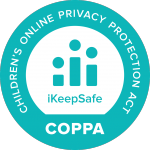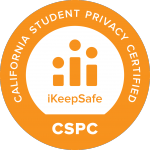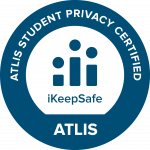Getting ready for a new school year? If you’re looking to bring more STEAM learning (Science, Technology, Engineering, Arts, and Math) into your classroom, you’re in for an exciting journey! The good news is that creating a STEAM-ready environment doesn’t require a complete classroom makeover or a massive budget. With some thoughtful planning and the right approach, you can transform your space into a hub of creativity, collaboration, and hands-on discovery.
Here’s how to set up a classroom that not only supports STEAM learning but inspires your students to think like innovators, creators, and problem-solvers.
1. Design for Flexibility and Movement
Traditional rows of desks might work for lectures, but STEAM learning is all about movement, collaboration, and experimentation. Your classroom setup should reflect this dynamic approach:
Create adaptable spaces with moveable seating and tables that can be quickly rearranged for group work or individual exploration. Think of your furniture as puzzle pieces that can be reconfigured based on the day’s activities.
Leave room to build and test. STEAM projects often require floor space for robotics challenges, engineering builds, or large-scale art installations. Even clearing a corner of your room can provide the space students need to bring their ideas to life.
Establish activity zones that serve different purposes—a technology station, a maker area, a quiet reading corner, or a presentation space. These zones help students understand what type of learning happens in each area while keeping materials organized and accessible.
Before finalizing your layout, take a moment to imagine how students will move through your space during a typical STEAM lesson. Does the flow make sense? Can groups collaborate without disrupting others? Small adjustments to your room arrangement can make a huge difference in how smoothly your lessons run.
2. Stock Up on Versatile, Open-Ended Materials
One of the biggest misconceptions about STEAM education is that you need expensive, high-tech equipment to be successful. While technology certainly has its place, some of the most powerful learning happens with simple, versatile materials that encourage creativity and experimentation.
Essential art and building supplies form the backbone of any STEAM classroom. Stock up on markers, tape, scissors, glue, construction paper, cardboard, craft sticks, and recycled materials. These everyday items become the building blocks for countless projects and prototypes.
Balance low-tech and high-tech tools to give students diverse ways to explore and create. Tablets, Chromebooks, and coding kits can enhance learning, but they should complement, not replace, hands-on exploration with physical materials.
Choose tools that grow with your students. Look for resources that can be used in multiple ways across different subjects and skill levels. For example, coding tools like Ozobot robots can introduce programming concepts to younger students through color-coded tracks while offering more advanced programming challenges for older learners.
Invest in specialized STEAM resources that support hands-on coding and problem-solving. Tools like Ozobot STEAM Kits provide standards-aligned activities that integrate seamlessly into project-based learning units. Color Code Magnets offer screen-free programming experiences that encourage collaboration and sequential thinking, while Challenge Mats provide structured yet open-ended activities perfect for individual work or small group exploration.
The key is selecting materials that are open-ended rather than prescriptive. When students have access to versatile supplies, they’re more likely to think creatively and develop their own unique solutions to problems.
3. Create a Culture of Exploration
Your classroom environment is about more than just physical space—it’s about creating a mindset where curiosity thrives and failure is seen as part of the learning process. This cultural shift is perhaps the most important element of STEAM success.
Celebrate the process, not just the product. Use your bulletin boards to showcase student iterations, rough drafts, and learning journeys, not just polished final projects. When students see that struggle and revision are valued, they become more willing to take creative risks.
Post affirming messages that reinforce a growth mindset. Simple mantras like “Mistakes help us grow,” “Think like an inventor,” or “Every expert was once a beginner” can shift how students approach challenges.
Establish collaboration norms that encourage respectful feedback and idea-sharing. Teach students how to give constructive suggestions and how to receive feedback gracefully. These social skills are just as important as technical skills in STEAM learning.
Make it clear from day one that your classroom is a safe space to experiment, fail, learn, and try again. When students feel psychologically safe, they’re more likely to engage deeply with challenging concepts and persist through difficulties.
4. Make Technology Visible and Accessible
Instead of keeping tech tools locked away in cabinets, integrate them into your classroom’s daily rhythm. When students see robotics, coding, and digital creation tools as part of everyday learning rather than special occasions, they develop more comfort and competence with technology.
Display student work prominently. Hang up student-created Ozobot Color Code tracks, Blockly programs, or digital art creations where everyone can see them. This not only celebrates achievement but also sparks curiosity in other students who want to try similar challenges.
Integrate tech across subjects. Use Ozobot Evo robots to bring coding into core subjects like math, ELA, or science. These versatile tools can reinforce academic concepts while building computational thinking skills, making technology feel like a natural part of learning rather than an add-on.
Set up interactive learning stations. Create a Color Code Magnet station on a whiteboard or magnetic surface where students can build screen-free programs and collaborate on coding challenges. Use Challenge Mats for individual or small group activities that reinforce problem-solving and sequential thinking skills.
Incorporate comprehensive STEAM resources. Integrate Ozobot STEAM Kits into your project-based learning units or weekly STEAM rotations. These kits provide standards-aligned, hands-on learning experiences that span multiple subjects and can be adapted for different grade levels and learning objectives.
Provide time for open exploration. Not every tech interaction needs to be tied to a specific lesson objective. Give students time to tinker, experiment, and follow their curiosity with these tools. These unstructured moments often lead to the biggest breakthrough discoveries and help students build confidence with robotics and coding.
5. Plan for Organization and Maintenance
STEAM classrooms can get wonderfully messy, but they need smart organization systems to function effectively. Plan ahead for storage, charging, and project management to keep your space both creative and functional.
Create clear storage systems with labeled bins, carts, and shelves. Use both text and visual labels so students of all reading levels can independently find and return materials. When students can easily access what they need, they spend more time learning and less time searching.
Establish charging solutions for devices and robotics tools. Nothing derails a lesson like discovering all your tablets are dead! Invest in charging stations or carts that keep your technology ready to go.
Designate space for ongoing projects. Not every STEAM project can be completed in a single class period. Set aside shelves or tables where students can safely store works-in-progress, whether they’re engineering prototypes, art installations, or multi-day coding projects.
Involve students in maintaining the space. Assign classroom jobs related to organization and care of materials. When students have ownership over the physical environment, they’re more likely to treat it with respect and take pride in the space.
6. Build Ownership Through Student Input
Want your students to feel truly invested in your STEAM classroom? Include them in the setup process! Student voice and choice in their learning environment can dramatically increase engagement and ownership.
Ask for their input on classroom layout, decoration, and organization systems. Students often have great insights about what works best for their learning.
Let them contribute to the visual environment by creating posters for different zones, designing storage labels, or building display models that showcase possibilities.
Give them setup tasks like organizing supplies, testing equipment, or creating welcome demonstrations for the first week of school. These activities build excitement while giving students valuable hands-on experience with classroom materials.
When students help create their learning environment, they develop a sense of ownership that extends to their learning throughout the year.
It’s About the Learning, Not the Gadgets
Remember, a successful STEAM classroom isn’t defined by how much technology it contains or how expensive the equipment is. It’s defined by how the space makes students feel: curious, confident, and excited to explore.
The most important elements are flexibility, accessibility, and a culture that values creativity and experimentation. Whether you’re working with a generous budget or stretching every dollar, focus on creating an environment where students feel empowered to ask questions, test ideas, and learn from both successes and failures.
With thoughtful planning, versatile materials, and a student-centered approach, you’ll create a classroom where meaningful STEAM learning can flourish all year long. Your students will leave not just with knowledge and skills, but with the confidence to tackle any challenge that comes their way.
Ready to get started? Begin with small changes and build from there. Your STEAM journey starts with a single step—and your students will be excited to take that journey with you.









